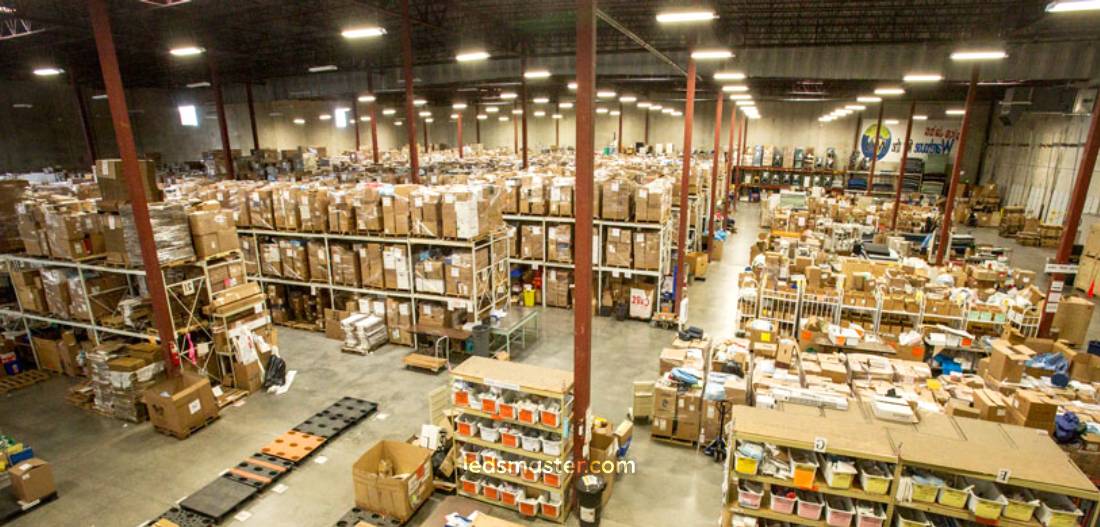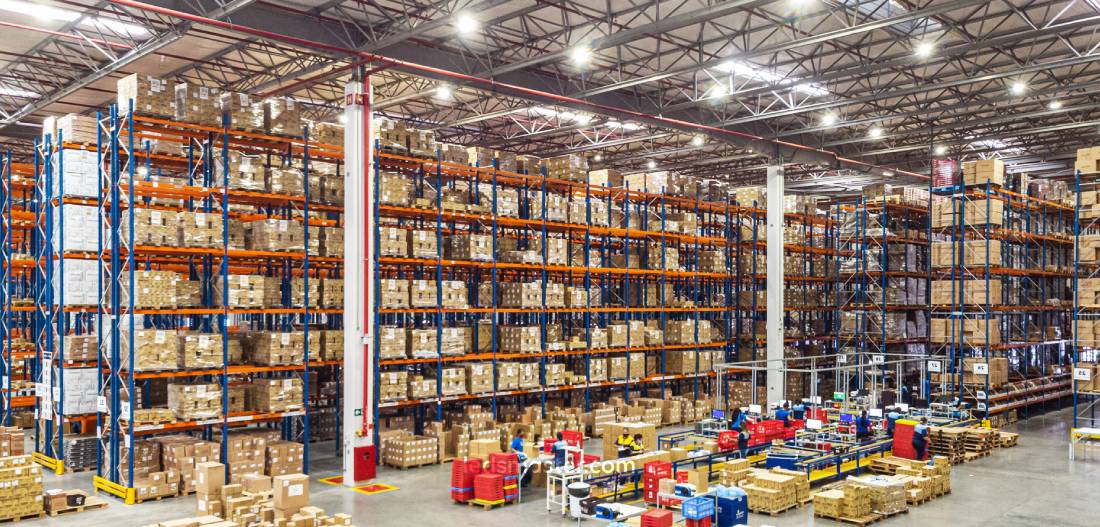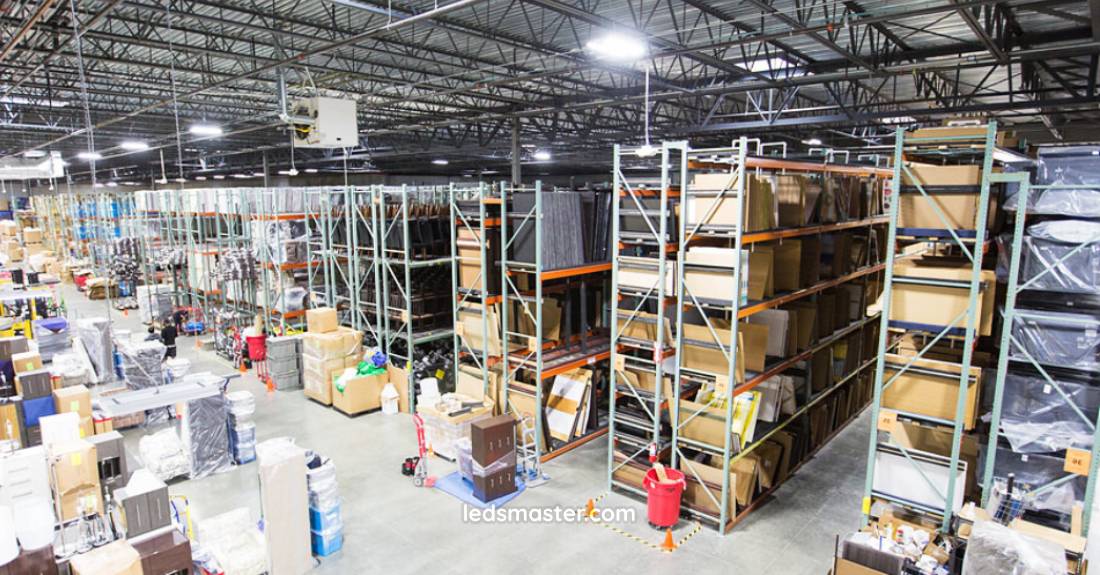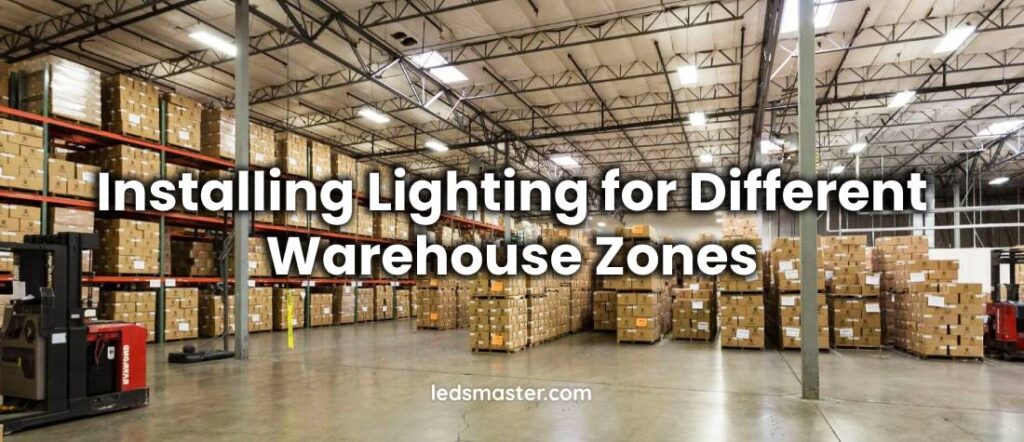Each zone within a warehouse has different lighting needs, and addressing these differences is important for both workers’ comfort and the operational flow. By understanding how to tailor lighting solutions to specific zones, the warehouse environment can be optimized for various tasks and activities. The design of lighting systems must take into account factors such as task requirements, space layout, and energy efficiency. The following explores how to install lighting for different warehouse zones, focusing on storage areas, office spaces, and loading zones.
Table of Contents
ToggleLighting in Storage Areas
Lighting in storage areas of a warehouse serves a different function compared to other zones. The primary goal in these spaces is to provide adequate visibility for picking, sorting, and shelving inventory. Storage areas are typically large and can vary in terms of racking systems, aisle widths, and storage methods. As such, the lighting system must be tailored to meet the specific needs of the space.
General Lighting Requirements in Storage Areas
In storage areas, a well-distributed lighting layout ensures that employees can easily locate items, navigate aisles, and handle inventory. Lighting must be bright enough to illuminate the entire space but not so intense that it causes glare or visual discomfort. For general storage, lighting should be uniform, meaning there should be minimal shadowing to avoid areas where visibility is compromised.
When designing lighting for a storage zone, it’s important to consider the height of the ceilings, as higher ceilings often require more powerful lighting solutions. The use of high bay LED lights is common in such areas due to their long lifespan and high lumen output, which are perfect for large spaces with high ceilings.

Task-Specific Lighting in Storage Areas
In some storage spaces, certain tasks may require focused lighting, such as reading labels, identifying products, or checking inventory. In these cases, task lighting should be incorporated into the design. Pendant lights or task-specific LED strips can provide additional light exactly where needed, without overwhelming the entire area with unnecessary brightness.
Additionally, in areas where high stacking of goods occurs, especially in warehouses with pallet racking systems, it is important to focus on vertical lighting. This ensures that the higher shelves are just as visible as the lower ones, reducing the likelihood of accidents and improving productivity.
Energy Efficiency in Storage Areas
Storage areas tend to be large and operate for extended hours. As a result, energy consumption can be a concern. Using energy-efficient LED lighting solutions that have motion sensors or automated controls can help reduce unnecessary energy use. Lights can be set to dim or turn off in areas that are not in use, and this can help manage the warehouse’s overall lighting costs.
Lighting in Office Spaces
The lighting in office spaces within a warehouse plays a different role compared to that in the storage areas. Office spaces are where employees perform administrative tasks, conduct meetings, and handle paperwork. In these areas, proper lighting is required for tasks that require close attention to detail, such as reading, writing, or working on computers.
Lighting Requirements for Office Zones
For offices, lighting should mimic natural daylight as much as possible to avoid eye strain and fatigue, which can negatively impact productivity. A well-lit office will have a mix of ambient lighting and task lighting. Overhead lights can be used for general illumination, while desk lamps or under-cabinet lights provide task-specific lighting.
Using LED lights with adjustable color temperatures can be effective in creating an environment that suits various tasks throughout the day. For instance, cooler, bluish light can help with focus and alertness during the morning hours, while warmer, softer lighting in the evening can promote relaxation and reduce eye strain after long hours of work.

Layout Considerations for Office Lighting
The layout of office lighting should be designed to avoid direct glare on computer screens and other digital displays. Proper placement of light fixtures will help reduce shadows and glare while ensuring that workspaces remain well-lit. Suspended ceiling lights or recessed downlights are often chosen for office spaces, as they distribute light evenly and don’t create excessive shadows.
Lighting controls also play an important role in office environments. Dimming switches and the ability to control the intensity of the light can help workers adjust the environment to suit their individual needs. Adjustable lighting also helps with maintaining an energy-efficient environment, particularly when only certain parts of the office are in use at any given time.
Lighting in Loading and Unloading Zones
The loading and unloading areas in a warehouse are high-traffic zones where visibility is crucial for both safety and operational efficiency. These areas often operate at different times of the day and night, depending on the warehouse’s schedule. This means lighting must be flexible and able to accommodate a range of tasks, from loading and unloading goods to ensuring safe vehicle movement.
Lighting for Safety in Loading Zones
In loading zones, safety is a major concern. The areas are often crowded, with forklifts and other heavy machinery moving large loads. Bright, consistent lighting is needed to ensure that workers can see clearly, avoid accidents, and properly handle inventory. Motion sensors and floodlights are commonly used to ensure that lighting is always on when workers are present. Additionally, these lights should be strategically placed to illuminate the entire loading area, including ramps, docks, and entryways.
Task Lighting for Loading and Unloading
Just like in storage areas, task lighting is often required in loading zones. Workers need extra lighting when handling small items or performing quality checks. This might involve the installation of focused lighting, such as task lamps or strip lights, to provide more concentrated light on specific tasks like sorting or inspecting goods.
Outdoor Loading Zones
For warehouses that have outdoor loading zones or loading bays, lighting must be durable enough to withstand various weather conditions. Outdoor lighting, such as pole-mounted floodlights, should be used to ensure the area remains illuminated even during late-night operations. These fixtures need to be weatherproof and capable of offering wide coverage to light up large areas.

Managing Lighting for Different Zones
When installing lighting for different warehouse zones, it is important to create a comprehensive lighting strategy that addresses the distinct needs of each area. Understanding how each zone functions within the warehouse helps in selecting the right types of lights and determining the optimal positioning.
Integration of Lighting Systems
Integrating lighting systems across different warehouse zones can improve efficiency and provide a seamless experience. For instance, automatic dimming or motion sensors can help adjust lighting in less busy storage areas, while maintaining full illumination in the office or loading zones. The use of smart lighting systems is an innovative solution that provides centralized control over all zones. These systems allow warehouse managers to monitor and adjust lighting remotely, ensuring maximum energy efficiency without compromising visibility.
Smart Controls for Energy Efficiency
Energy-efficient lighting systems with smart controls play an important role in modern warehouse operations. These controls allow for the automation of lighting based on occupancy or the time of day. For example, lights in the storage area may dim automatically when no one is in the aisle, reducing unnecessary energy consumption. Similarly, in office areas, lights can be programmed to adjust based on the level of natural light entering the space, which can improve comfort and help reduce energy use.
Challenges in Lighting Installation for Warehouse Zones
When installing lighting in different warehouse zones, there are some challenges that need to be addressed. One of the primary challenges is the sheer size and complexity of the space. Warehouses often have high ceilings and large open spaces, which require careful planning and precise installation. Another challenge is the need for durable lighting systems that can withstand the wear and tear of industrial environments, especially in loading zones where equipment and materials can cause damage to fixtures.
Environmental Considerations
Environmental factors also play a role in selecting the right lighting for each zone. In warehouses with a wide range of temperatures or humidity levels, lights must be suitable for those conditions. For example, in cold storage areas, special lights may be needed to prevent performance issues due to low temperatures. Similarly, outdoor loading zones require fixtures that can handle exposure to the elements without compromising their functionality.
Balancing Cost and Efficiency
Balancing the cost of installation with long-term energy savings is a key consideration when planning lighting for a warehouse. While LED lighting systems may have a higher upfront cost, their energy efficiency and long lifespan often make them the most cost-effective option in the long run. Smart controls and sensors can further reduce operating costs by limiting the energy used in areas that are not in active use.
Conclusion
Lighting design in a warehouse must be tailored to the specific needs of each zone, from storage areas to office spaces and loading docks. By considering the unique requirements of each area, it is possible to create a lighting system that improves productivity, enhances safety, and reduces energy costs.

